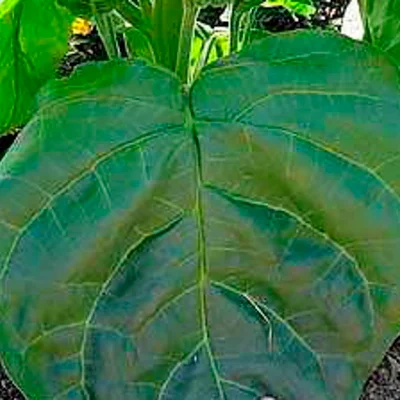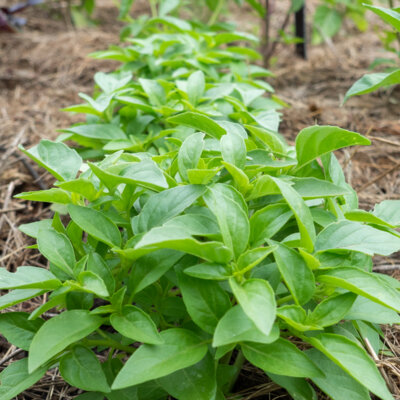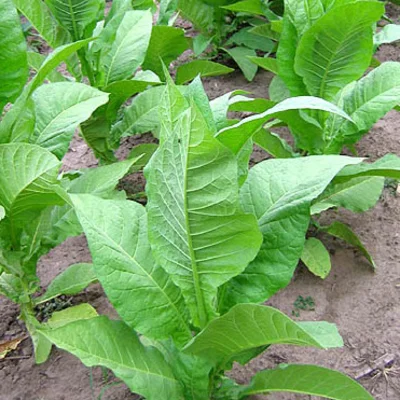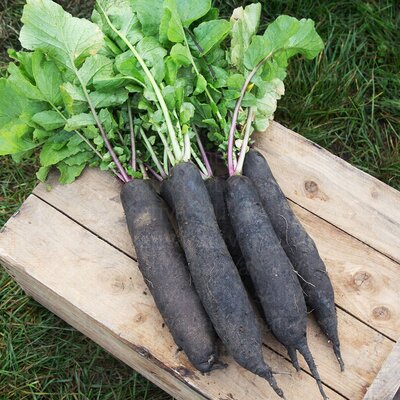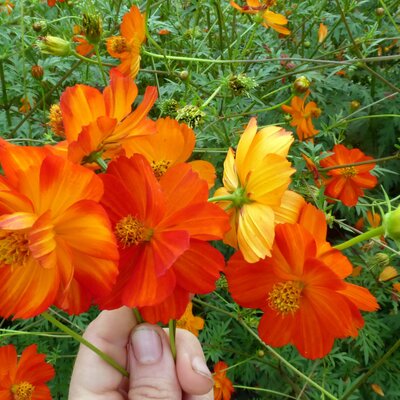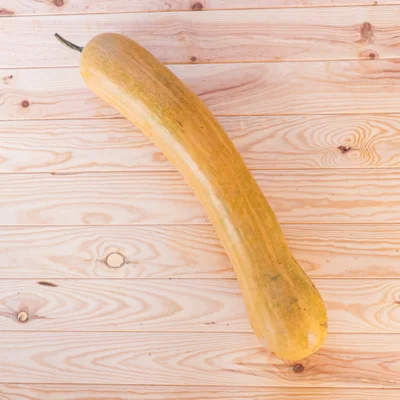
Longue de Nice - Moschata squash
This ancient variety produces curved fruit up to 1 m long and weighing up to 10 kg. Their ochre skin at maturity encloses firm, orange flesh with a slightly sweet, musky flavor.
The fruit can be eaten young, like zucchini, or when fully ripe.
What are the characteristics of the Long Nice squash?
The Long Nice squash, Cucurbita moschata, is an old-fashioned, late-ripening variety from southern France. Its long, curved fruits, up to 1 m long and weighing 10 kg, turn from green to ochre when ripe. The firm orange flesh, with its musky flavor, is highly appreciated in savory and sweet dishes: soup, velouté, purée, pie, baked gratin... The flowers of this squash are also edible.
How to grow Long Nice squash?
This butternut squash can be sown from February to May in pots of 2 to 3 seeds, under a light shelter, and from March to June in the ground.
Sow in pots 2 to 3 weeks before transplanting. Be careful not to sow squash seeds too early in the season, in which case the roots will become fibrous, making growth difficult in the garden. The seeds should be kept moist and warm, at a temperature of between 18 and 20°C, until they emerge.
To sow directly in the ground, wait until the last frosts have passed and choose a sunny spot. Prepare 2 weeks in advance holes filled with compost or organic matter, spaced 2 m apart in all directions, to accommodate the squash plants or seeds. Mulch the soil to maintain sufficient humidity and limit water evaporation.
In the vegetable garden, this variety of squash grows harmoniously with corn and beans, giving rise to the "three sisters" or milpa. Plant basil between all types of squash to repel pests.
When to harvest Nice long gourds?
Long Nice squash is harvested between July and November, before the first frosts. Drying out of the stalks indicates that the fruit is ready to detach from the plant. Be careful not to tear the squash, but cut as close as possible to the stem, 10 cm above the stalk. They can also be harvested immature and eaten like zucchini.
This variety of squash keeps for 4 to 9 months in a ventilated, dry place, at a temperature of between 10 and 12°C. Place the fruit, spaced apart and tail up, in crates set high up. These squashes can also be frozen for up to a year, after slicing and cooking.
These products may also be of interest to you
in the ground, in bucket
Sow in pots at 18-20°C, 2 to 3 weeks before planting. Transplant with the root ball into the ground, after the last frosts, at a minimum distance of 2 m in all directions. To sow directly in the ground, sow after the last frosts, once the soil has warmed up. In both cases, prepare holes filled with compost or organic matter two weeks in advance to accommodate your seedlings or seeds.
March, April, May
April, May, June
July, August, September, October, November
in the ground
sunny
fort
all floor types
rich, furniture, fees, reheated, wet
Cucurbita moschata
mid-season
From 3000 to 10000 g
12 seeds
elongated
farm
Ochre
edible
From 150 to 400 cm
From 90 to 120 cm
runner
France
Inconnue
This ancient variety originates from the south of France.



